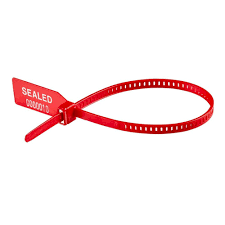In the world of international trade and logistics, the security of shipments, especially high-value luxury goods, is of paramount importance. To ensure the integrity and safety of these valuable shipments, organizations often rely on ISO 17712 certified seals. ISO 17712 is an internationally recognized standard that sets requirements for mechanical seals intended for securing freight containers. These seals provide a level of security that helps prevent tampering, theft, and unauthorized access to the goods during transit. In the case of high-value luxury goods shipments, where the stakes are higher, adhering to ISO 17712 standards becomes even more crucial.
ISO 17712 certified seals come in various types, such as bolt seals, cable seals, and plastic seals, each designed to suit different applications. When it comes to securing high-value luxury goods, there are several specific recommendations that organizations should consider:
High Security Bolt Seals:
High-value luxury goods often require a higher level of security. Bolt seals offer robust protection due to their design and construction. They consist of a strong metal bolt and a locking mechanism enclosed in a tamper-evident casing. For luxury goods shipments, opting for bolt seals with anti-spin features can be beneficial. These seals are designed to prevent unauthorized rotation, making it harder for thieves to tamper with or remove the seal without leaving visible signs of tampering.
Unique Serial Numbers and Barcoding:
Each ISO 17712 certified seal should have a unique serial number that is both laser-engraved on the seal and presented in barcode format. This provides a way to track and verify seals, ensuring that they match the records and reducing the risk of counterfeit seals being used. For high-value luxury goods, having a digital record of these numbers can aid in accountability and traceability.
Tamper-Evident Features:
ISO 17712 certified seals are designed to exhibit visible signs of tampering, making it evident if unauthorized access has occurred. High-value luxury goods shipments should utilize seals with multiple layers of tamper-evident features, such as color changes, irreversible locking mechanisms, and hidden indicators that become visible when tampered with.
Material Durability:
Luxury goods are often transported over long distances and through varying environmental conditions. Choosing seals made from durable materials like heavy-duty metals or high-strength polymers ensures that the seals remain intact and effective throughout the journey.
Third-Party Certification:
When sourcing ISO 17712 certified seals, it’s essential to choose manufacturers and suppliers with reputable third-party certifications. This guarantees that the seals have been thoroughly tested and meet the stringent standards set by ISO 17712.
Supplier and Seal Authentication:
Partnering with suppliers that offer authentication services can add an extra layer of security. These services can help confirm the legitimacy of the seals being used, reducing the risk of using counterfeit or unauthorized seals.
Customization and Branding:
For luxury goods shipments, customization options can be explored. Some manufacturers offer the ability to customize the seals with company logos, which not only enhances the brand’s presence but also makes it easier for recipients to identify genuine shipments.
Training and Standard Operating Procedures:
Implementing proper training and standard operating procedures for seal application and verification is crucial. Ensuring that personnel involved in the shipping process understand the importance of proper seal handling and are educated on the methods of identifying tampering can greatly enhance security measures.
Conclusion:
ISO 17712 certified seals provide a strong line of defense against tampering and theft in the transportation of high-value luxury goods. To maximize security, organizations should choose the appropriate seal type, prioritize tamper-evident features, ensure durability, verify supplier credentials, consider customization options, and establish robust training protocols. By adhering to these recommendations, companies can significantly enhance the security of their high-value luxury goods shipments and instill confidence in both customers and stakeholders.












